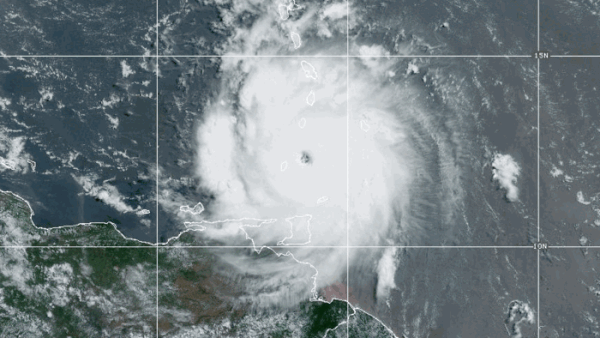
The strongest hurricane to occur this early in the year made landfall in Matagorda, Texas, early Monday morning (July 8) at a Category 1 level on the Saffir-Simpson Hurricane Wind Scale.
At 4:00 a.m. local time, Hurricane Beryl roared inland with maximum sustained winds of 80 miles per hour (129 kilometers per hour), bringing with it a , dangerous rise in seawater level — up to seven feet (two meters) in some spots along the Gulf coastline in eastern Texas.
The storm also brought "considerable" flash and urban flooding inland upon making landfall. River flooding is expected to be minor to isolated, but life-threatening rip currents will persist into Tuesday (July 9) along the Gulf Coast, experts say. A threat for tornadoes will also continue from eastern Texas into parts of Louisiana and Arkansas throughout the day.
This morning, @NOAA's #GOESEast satellite watched #Beryl make landfall near Matagorda, Texas as a Category 1 #hurricane around 4:00 a.m. CT. More on #HurricaneBeryl: https://t.co/2swBObLNCc https://t.co/IoLJOrqCPs pic.twitter.com/Sbdj6xXpmGJuly 8, 2024
Satellites have been keeping an eye on the powerful tropical system and captured the moment it made landfall. The National Oceanic and Atmospheric Administration's (NOAA) GOES-East satellite provides nearly real-time views of Beryl from 22,236 miles (35,785 kilometers) above Earth's equator.
The Associated Press (AP) reports that 1.5 million homes are already without power as of Monday morning, and more outages will be likely with the dangerous hazards continuing. There already has been one fatality confirmed by the Harris County sheriff's office from a falling tree, according to the Associated Press.
Freeport, Texas experienced a wind gust of 94 miles per hour (151 kilometers per hour) Monday morning, according to a Mesonet station and a National Ocean Service (NOS) station that also reported a sustained wind of 73 miles per hour (117 kilometers per hour) and a gust of 82 miles per hour (131 kilometers per hour) at the entrance to Galveston Bay in Texas.
Beryl will continue to weaken as it moves inland with conditions improving for the Gulf Coast over the next 24 hours. The storm will connect with a frontal system in the Mississippi Valley and bring rain stretching from Texas through Missouri and into the Great Lakes region this week.







